The Jim and Vanita Oelschlager
Native American Ethnographic Collection
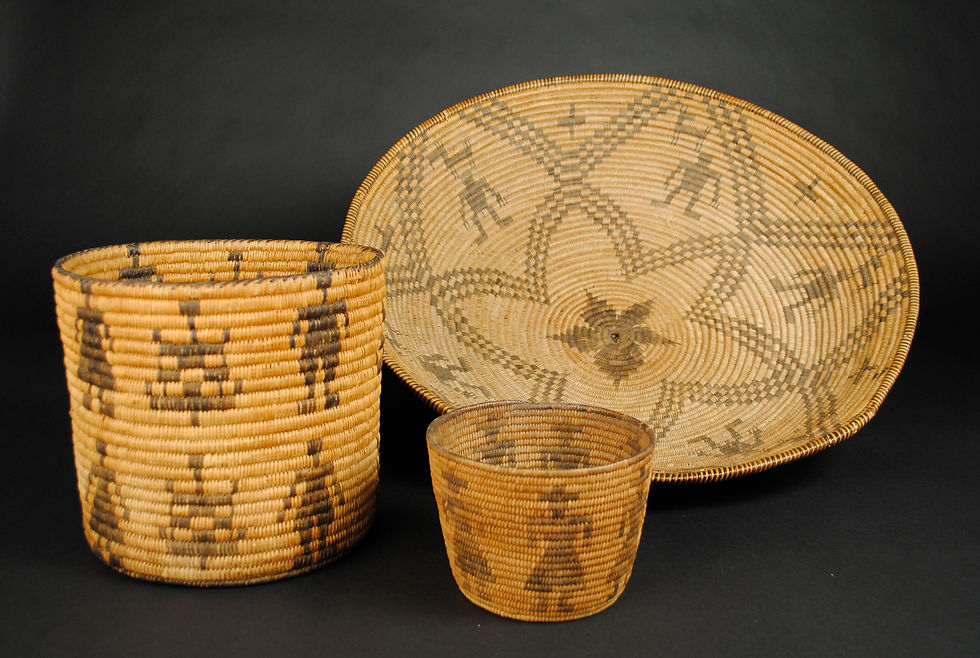
left to right: NAI.288.2010 NAI.274.2010 NAI.287.2010
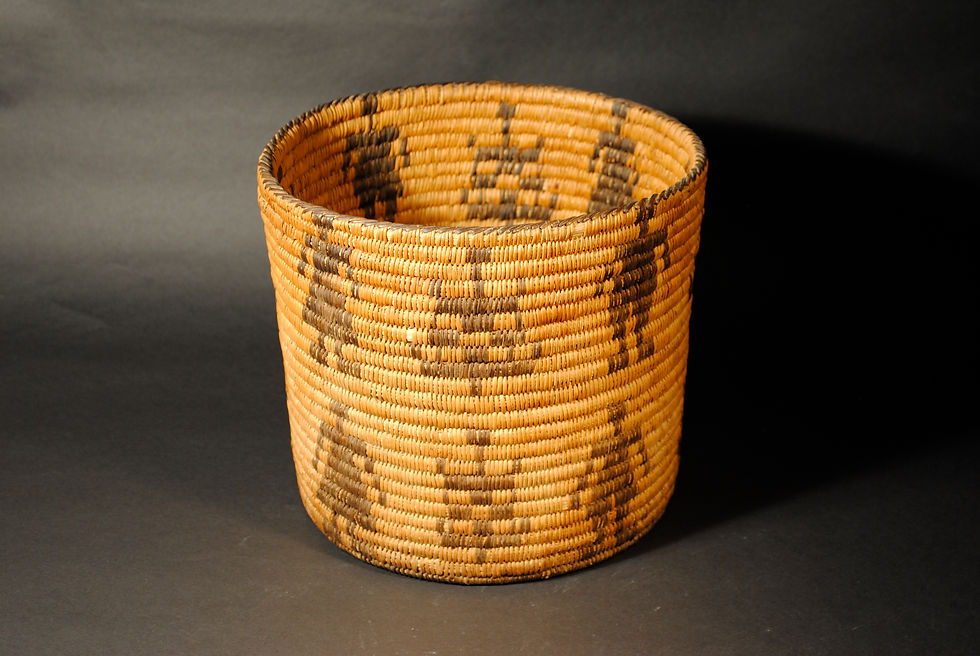
Basket, ca. 1800 Pima. Woven grasses. 6.25” x 4.75” x 4.75”
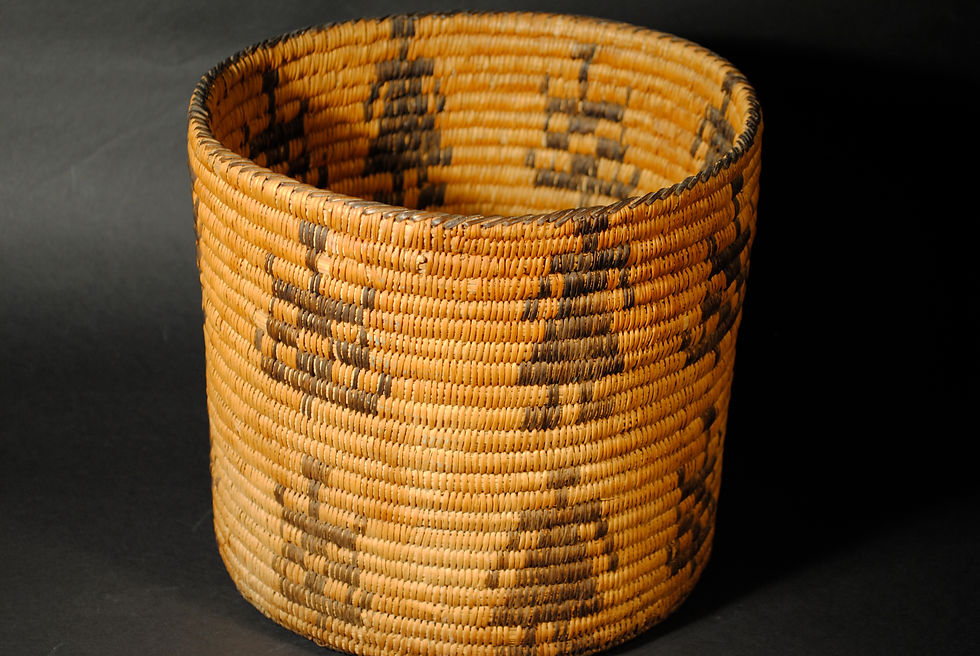
Basket, ca. 1800 Pima. Woven grasses. 6.25” x 4.75” x 4.75”
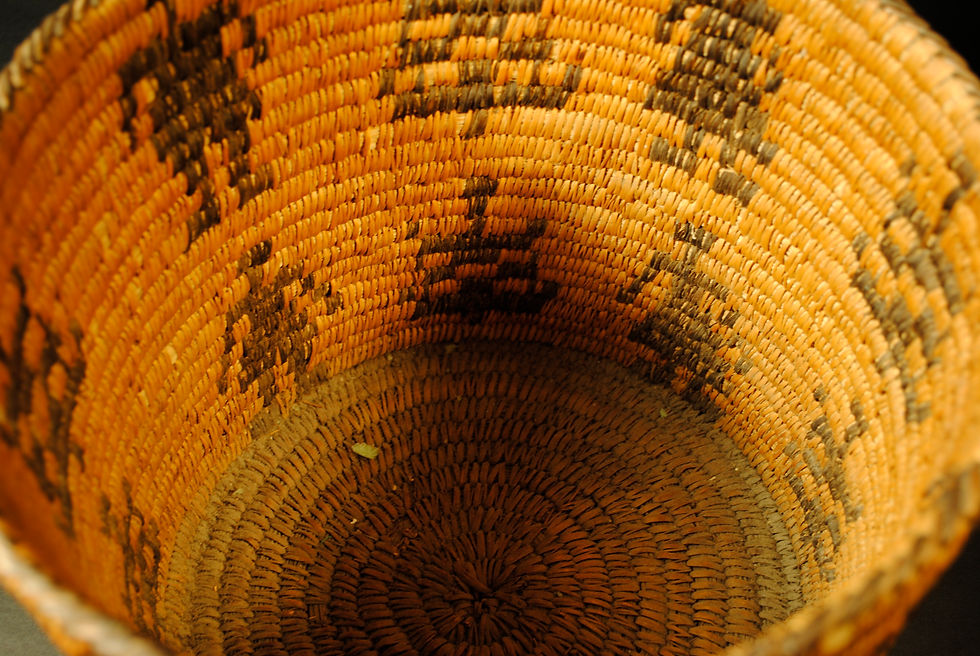
Basket, ca. 1800 Pima. Woven grasses. 6.25” x 4.75” x 4.75”

Basket, ca. 1800 Pima. Woven grasses. 6.25” x 4.75” x 4.75”
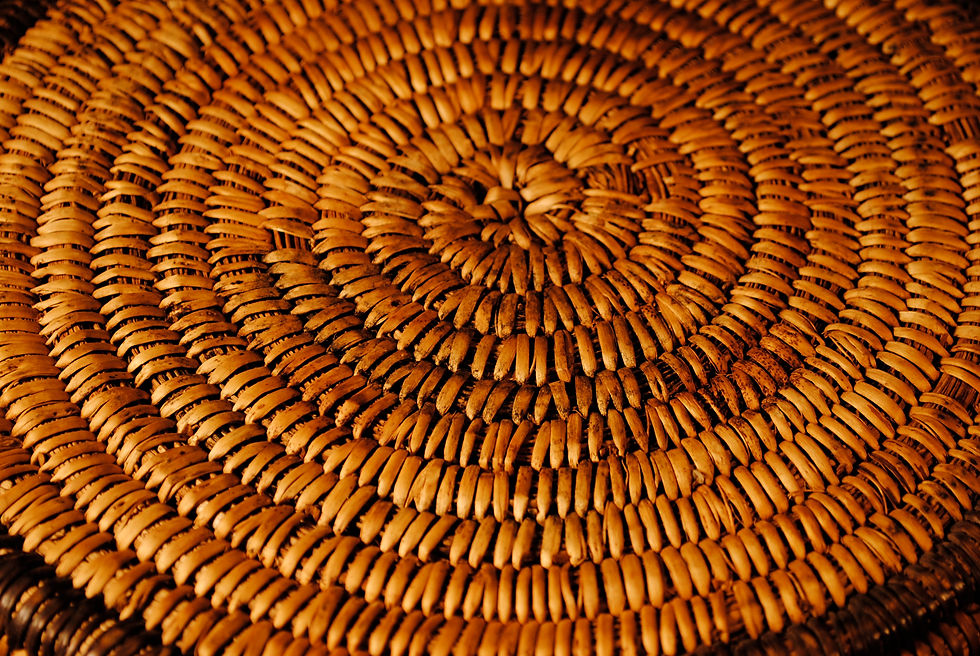
Basket, ca. 1800 Pima. Woven grasses. 6.25” x 4.75” x 4.75”
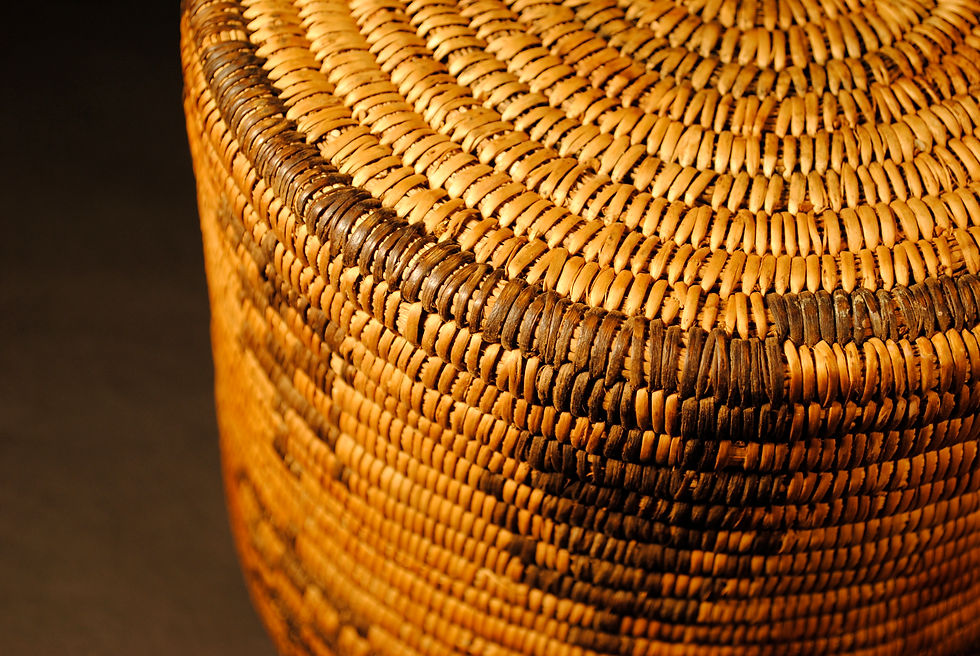
Basket, ca. 1800 Pima. Woven grasses. 6.25” x 4.75” x 4.75”

Basket with coyote figures, ca. 1800 Pima. Southern Great Basin. Woven grasses. 6” x 23”

Basket with coyote figures, ca. 1800 Pima. Southern Great Basin. Woven grasses. 6” x 23”
Mono Lake, located at the east entrance of Yosemite National Park in eastern California, has been home for Paiute peoples from the early 800s CE.
Building on a long tradition of basket making for utilitarian use, by the 1800s they soon became acclaimed basket makers for visitors at Yosemite National Park. Traditionally, reeds and grasses were woven for mats and baskets used for carrying and storing food.
Whole families worked together in autumn to harvest pinion nuts. The nuts were beaten from the cones onto mats, then cleaned, roasted, and ground into compact storable flour that was carried and stored in tightly woven baskets. In areas that had oak trees, acorns were ground into a powder and large quantities were cooked in cooking baskets for ceremonial occasions.
The large coiled baskets and bowls made with small, tight stitches were used for cooking. Liquid expanded the fibers, making the baskets watertight, and heated rocks were placed inside to boil the contents.
Because of the work required to make baskets, they had considerable social value and therefore were used in ceremonies and given as gifts of esteem to important visitors.